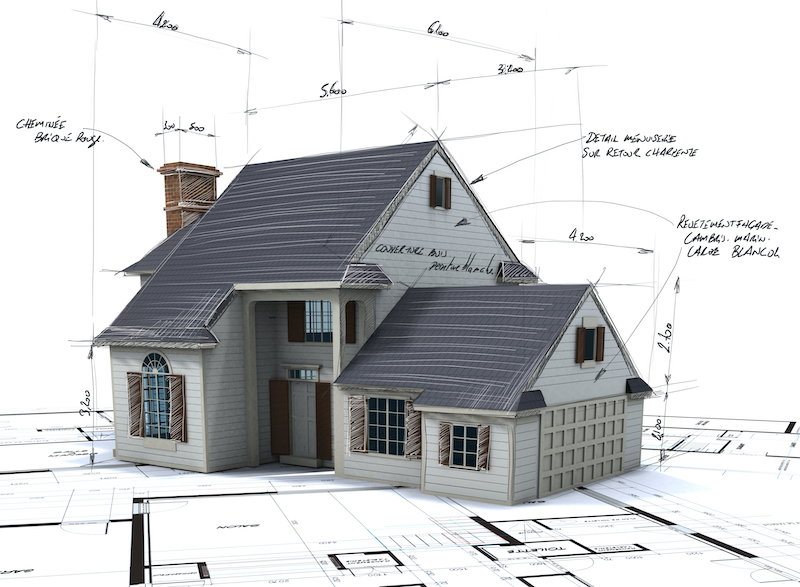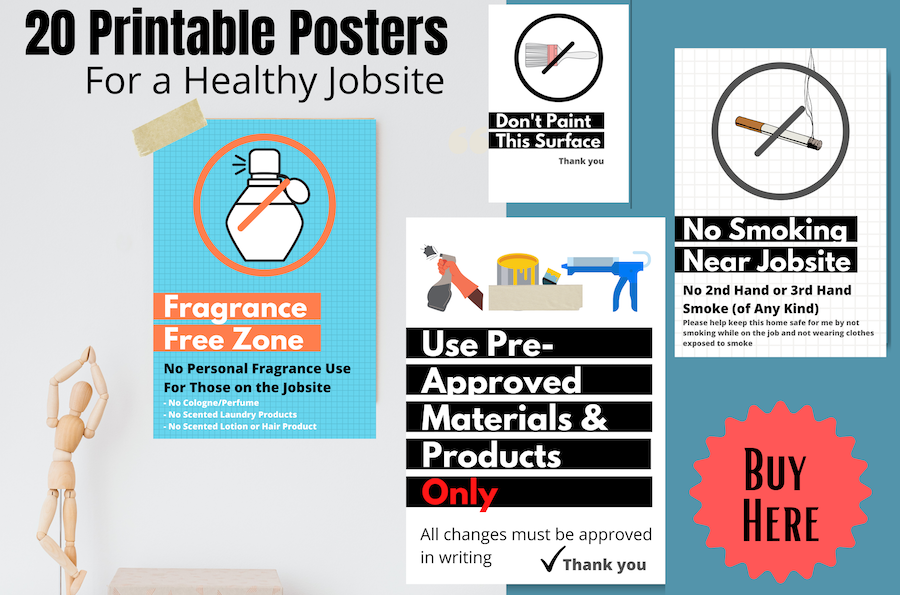The article lists out all the areas where you can and should save money on new construction.
There are many ways in which you can save money on a new build without compromising quality.
Some of this needs to be planned out from the start of the land purchase, some will come in later in the design and then materials, and others are mistakes that will cost you money (and therefore will save money to prevent).
My focus is on good quality building but also on green healthy building. Green building with low VOC materials doesn’t have to cost more than your average mid to upper-range home, but building high-quality – something that isn’t going to go moldy – is going to cost more upfront.
This article contains affiliate links, upon purchase I make a small commission at no extra cost to you.
The Site – Ways to Save Money on Site Selection

- Do not buy a site that needs extensive grading such as removal of hills
- Choose a site that doesn’t have difficult terrain like bedrock
- Clearing the land of trees, rocks costs money, minimize that if possible
- A long difficult driveway could make it more expensive to bring in supplies (not having easy access to the build site)
- City sewer is cheaper than septic, city water is less expensive than adding a well
- Buy affordable land
The Design Stage – Ways to Design a House to Reduce the Cost

- Choose a simple roof structure – a simple gable roof is the least expensive
- A square or rectangle shape is the least expensive design, adding more corners to your foundation costs more
- Slab on grade is less expensive than a basement but in Cheryl Ceicko’s course, she explains why that is not usually ideal for mold avoidance.
- It is generally more cost-effective to build a two-story home, rather than a ranch (if you are comparing the same square footage)
- Simplify the framing
- A steeper pitch is more expensive, more labor, and more roof, and, if it’s heated space underneath then it’s more room to heat. But don’t go too low on the pitch or you might not have the water-shedding that you need (see Cheryl’s course)
- Raked or cathedral ceilings cost more than an attic, but an unconditioned attic has its risks. An unconditioned attic is the least expensive option but you need to make sure it’s designed right and you can’t use it for anything – including HVAC equipment and ductwork
- Choose designs that do not require complex engineering like long spans, cantilevers
- Design the build to use standard sizes of lumber, sizes of plywood, and sizes of sheetrock. Using an unusual ceiling height can create extra work and wasted material having to cut sheets to fit
- Use some solar passive design which can help you save some money on energy bills
- Use standard windows, not custom sizes. Floor-to-ceiling windows are another way to add a lot of expense as are invisible corners and anything that needs to be craned in!
- An open floor plan with multi-purpose living spaces can save space and money
- It costs less to add space to a bedroom or living area than to your kitchen bathroom or laundry room. Extra cabinetwork, tiling, and waterproofing make these rooms more expensive per sq ft
- Extra bathrooms are expensive. If you don’t need it for yourself or for resale value, consider leaving it out
- Curved walls and arched doors cost more
Building Materials – Where You Can Save Money on Materials

- Some salvage materials or offcuts can be used in a healthy home – offcuts or salvaged countertops for example
- In terms of materials, a standard shingle roof is much less expensive than a metal roof (or other rare options like slate)
- No high maintenance siding – vinyl has to be power-washed, painted wood is high maintenance
- Leave the basement unfinished (if you have one) – see Cheryl’s course
- Look at the availability of materials – buying unusual materials like MgO board that have to be special ordered and shipped in adds cost (and might not be advantageous anyway as many of these materials are experimental)
- Look at the availability and cost of the trades. Plaster walls, for instance, are healthy and beautiful but this is a specialty trade that costs more and there are some small towns where you would have to bring someone in for this from another town
- If you are planning on buying fixtures and finishes know that this might not save money and could cost you more. Getting fixtures and finishes in on time is critical to meeting deadlines. If you have not managed a build before but you are ordering these yourself you definitely could delay things.
- If you buy materials or appliances you need to know who is in charge of the warranty
- In a healthy home, you should select some finishes but make sure to choose these early on in the build and make sure you know the pros and cons of using something that is unusual
- Also, regarding fixtures and finishes like paints, many builders get access to trade discounts, to save money I would ask the builder which brands of paints, floor finishes, cabinets, and fixtures they use and we will see if those brands have healthy options so that we can save money
During the Build -Where to Save Money During the Build

Plan well
Making changes can be costly. It’s especially going to hurt if the contractor tells you that is not a small change but you don’t listen!
Plan things out well in terms of practical and design matters. What seems like a small change to a homeowner (like the size of your stove) can mean not really the small adjustment you thought it would take to reroute lines and change cabinets.
So make sure to plan things in advance and then stick to your plan if you want to save money.
Areas You Should Spend More Money On
- Healthy flooring – avoid (most) laminate, LVP, vinyl sheet, and rubber floors. Upgrade to healthier flooring.
- Cabinets – ideally upgrade to solid wood doors/drawer fronts and plywood boxes.
- Upgrade from vinyl windows to fiberglass or thermally broken aluminum.
- HVAC system upgrades – having someone size it and design it, possibly an ERV, no ducts in unconditioned spaces
- Air sealing – design, labor, materials, and supervision
These are the most toxic building materials that are the priority to avoid.
Avoid Mistakes – The Most Important Way to Save Money
In The Design
- Hire an architect – this is fundamental to building something without defects that will lead to problems later on
- A mold-aware architect like Cheryl should lend a second pair of eyes during the design phase to check for design flaws and help the team specify the right healthy materials as some affect moisture management
- 5-20% of the cost of the build will go to design fees
- Getting up to speed on the basics of building and mold prevention is key, if you don’t have the knowledge needed from the start you can easily run into problems later
- The architect should be there the whole way
- Mistakes cost money, a lot of it
In the Build
- Pour a concrete patio or walkway later
- Finish the basement later
This post was reviewed for accuracy by Brad Campbell, Carpenter, Luke Skaff, Engineer, and Cheryl Ciecko, Architect.
Corinne Segura holds certificates in Building Biology, Healthier Materials and Sustainable Buildings, and more. She has 10 years of experience helping others create healthy homes.
If you would like to support the research behind this blog you can make a donation via Kofi!


Rachel Doremus
Thank you for this amazing website and all your knowledge! You have provided so much help and I’m only building a she shed! I hope to use your services in the future. Many thanks for all you do.
Alex
Wow Corine, I am very impressed with your work and think you are ahead of your time. Thank you for doing this.
Corinne
Thank you